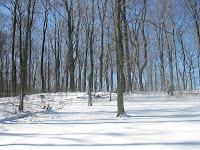
A few hours after midnight in January 1, 2002, an ancient old lady died at Sharon Hospital, just a few months shy of her 100th birthday. Her name was Emily Mills Hopson, and she was one of the most extraordinary people I have ever met.
This brilliant, stubborn, fascinating woman was not a teacher by profession (she was international buyer for the famed G. Fox & Co Gift Shop), but she was one of the best teachers I had. As long time president of the Kent Historical Society and Kent Town Historian, Emily took me under her wing after a chance conversation about Kent history while pulling weeds together at our Seven Hearths museum. At age 92, she still had energy and stamina! I began to volunteer for her one day a week, and was immediately in awe of her vast knowledge about our town and the local iron industry. I scribbled notes constantly, even on the back of my hand if no scrap of paper was handy. Hers was a nonstop history lecture.
Miss Hopson came from the large Kent Hopson family, and was a member of a generation that was primarily women. They were all well educated – Vassar, Wellesley and Smith – and all rabid historians. Emily’s mother, Elizabeth, also a Hopson by birth, had attended the Amenia Seminary and instilled a love of learning in her daughter. Emily fondly remembered childhood trips in a horse drawn buggy from Kent to Amenia to visit her mother’s friends and relatives (she was a Pratt descendant). The trip took all day, and Emily avidly absorbed the tales her Hopson parents told while they rode along.
Like most passionate students, Miss Hopson like to share her knowledge. She especially loved to teach children, though sometimes her detailed lectures went a little bit over their heads. Her father, grandfather and great-grandfather were iron masters and ran the Kent Iron Manufacturing Company. All the Hopson children learned the history of the industry down to the most minute detail. If Emily had one fault it was that she thought we all ought to be as interested in those details! But she also loved the history of education, and when the opportunity arose for the Kent Historical Society to acquire the pre-Revolutionary one-room schoolhouse on Skiff Mountain, she grabbed it. Putting her considerable energy, enthusiasm and financial wealth into the restoration project, she soon had an impeccably restored gem of a little building. And she finally had a classroom of her own!
Miss Hopson immediately developed a program for the 2nd and 3rd graders at Kent Center School – a program that we still use in part today. She collected old textbooks and composition books, and let the children actually use them. She gathered together graduates of many of Kent’s defunct one room schoolhouses at the Skiff Mountain School one day in order to collect their stories, so that he lessons would be accurate. She included a communal water bucket and dipper, as well as old lunch buckets and baskets, in her program, and generally held the kids spellbound as she told them about life in a one room schoolhouse. While the water dipper grossed out the children used to water fountains and plastic bottles, they were fascinated by the lesson plans, the stories and games that the kids “back in the day” used to play. Arithmetic bees were always a big hit. She continued to teach those classes until well into her 90s, and always had a spellbound audience.
As my teacher, Miss Emily Hopson and her lessons and memories still guide me through the programs that the Kent Historical Society holds for the Kent Center School students each year. I couldn’t do it without her! The best teacher ever.
by Marge Smith,
Director
Kent Historical Society


















.jpg)
